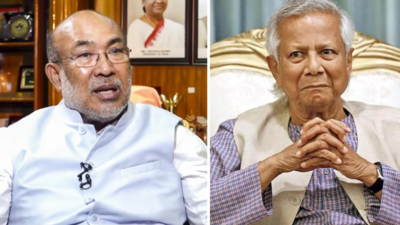
Mangroves contribute to Mumbai in a host of ways. They protect the city from storm surges, nurture fish breeding grounds, absorb air pollution, and help filter coastal waters. But these services rarely find a place on balance sheets or cost-benefit analyses - in part because they aren't easy to quantify.
Now, a new study tries to do precisely that. According to an analysis by IIT Bombay researchers, benefits provided by mangroves are worth at least Rs 1,700 crore a year to Mumbai Metropolitan Region (MMR). For Greater Mumbai alone, mangroves provide Rs 1,155 crore worth of services annually, the study found.

The findings highlight the economic value of these ecological systems, says researcher Naman Gupta. "It allows us to consider mangroves as not just a barrier to development, but as assets." The MMR is home to some 22,300 hectares of mangrove, while Mumbai hosts about 6,522 hectares, according to some estimates.
Gupta interviewed 150 households across rural (Vasai), semi-urban (Uran), and urban (Navi Mumbai) settings - and asked whether they would be willing to pay to conserve them. About 80% of rural and urban respondents said they would be willing to pay to conserve mangroves. That willingness was lowest among the semi-urban residents in Uran (58%).
However, the actual amount these Uran residents were willing to pay was the highest of the three sites - an average Rs 214 a month compared with Rs 154 among rural residents and Rs 146 among urban respondents. The willingness to pay was used to arrive at an economic valuation. Semi-urban residents might have been willing to pay more, researchers suggest, due to an increase in wealth from compensations received for acquisition of land for infrastructure projects.
Many also saw how mangroves shielded their lands from cyclones . According to researchers who interviewed households across rural, semi-urban and urban settings in MMR and conducted discussions with officials and community leaders, people understood the importance of mangrove conservation and when educated about their benefits, were willing to pay to conserve them. Over half of the 150 households the researchers spoke to were aware of the protective role of mangroves against climate change as well as other benefits.
This awareness was highest in rural areas where 83% of interviewees showed knowledge of climate change and 70% knew of the protective role of mangroves. About 80% of rural and urban respondents said they would be willing to pay some money every month toward conserving mangroves. That willingness was lowest among semi-urban residents in Uran (58%).
However, the actual amount these semi-urban residents were willing to pay was the highest of the three sites - an average of Rs 214 a month. One reason semi-urban residents might have been willing to pay more, researcher Naman Gupta suggests, is an increase in wealth in recent years due in part to compensations received for acquisition of land for infrastructure projects. They had the highest mean income among the groups.
Also, many residents in Uran saw how mangroves shielded their lands from cyclones Nisarga and Tauktae. Rural residents were willing to pay the second highest amount per month - Rs152 - despite averaging the lowest incomes, the survey found, perhaps reflecting the greater impact of weather change on rural livelihoods. "Rural communities working in fisheries and farming are able to make the connection between climatic changes and their own lives," says Gupta.
By contrast, urban residents were willing to pay the least amount, the survey found. Residents interviewed in Navi Mumbai were aware of the importance of mangroves, but felt the govt should be doing the job of conservation. "Many of them said the govt has the resources and we shouldn't have to contribute," said Gupta.
However, urban residents were willing to volunteer more time for conservation - an average of ten hours a month compared with five hours offered by rural respondents and less than an hour a month by semi-urban residents. These differing responses show there can be no single strategy in mangrove conservation, Gupta says. She hopes her assessment will provide a reference point for policymakers or spur them to undertake a detailed assessment.
Get the latest lifestyle updates on Times of India, along with EID Wishes , Messages and quotes !.















